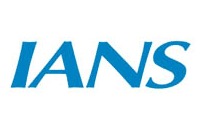As enterprises and original equipment manufacturers (OEMs) look to streamline supply chain processes after the pandemic-led disruption and trade wars, the top barrier to a digital supply chain today is culture, followed by legacy tech, usable data and legacy processes.
According to Gartner, chief supply chain officers (CSCOs) must work with partners across the business to overcome those barriers and enable their CEO’s digital business ambitions.
“CSCOs are tasked to design a supply chain organization that fits into this new era. While in the past, a good supply chain was efficient and powerful, it must now be agile and fast,” said Mike Burkett, distinguished vice president analyst with the Gartner Supply Chain practice.
The three macro trends that will shape the future of supply chain include the rise of digital business, new competitors and trade uncertainty and sustainability and circular economy.
“Given the critical role of supply chain in ensuring customer satisfaction and experience, much of the digitalization efforts will be on the shoulders of the CSCO,” Burkett said.
In recent years, uncertainty has been a constant in the supply chain.
There is uncertainty on where the next competitor will come from and what their impact will be.
Almost half of CSCOs believe that their business is at risk of being disrupted in the coming years, with the greatest risk coming from nontraditional businesses such as startups, the report said.
Then there is the trade uncertainty, caused by events including the U.S.-China trade war and Brexit.
More recently, the Covid-19 pandemic has raised concern about future pandemics, after shutting down global supply chains and trade routes.
“The ongoing uncertainty calls for a new approach to supply chain management,” Burkett said.
A circular economy is an economic model that separates the ability to achieve economic growth from the consumption of natural resources.
A supply chain that enables the circular economy has to have strong reverse logistics capabilities, Gartner said.
“The heavy equipment and machinery industries are already on a good path. However, this is a trend that no industry can miss out on — including consumer products,” Burkett said.
–IANS

